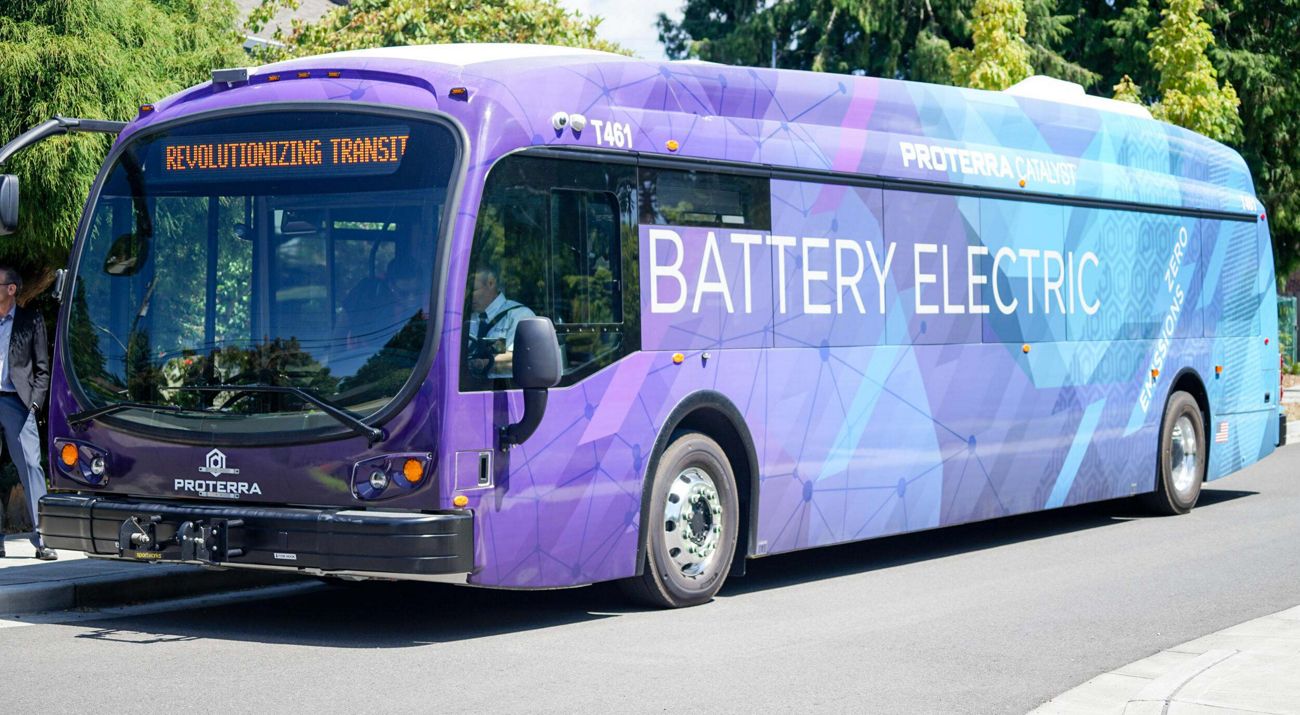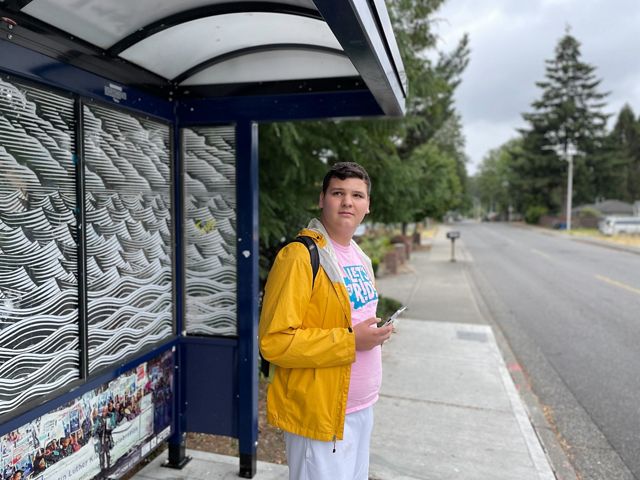
Climate Commitment Act Funds Help Washington Youth Thrive in Their Communities
by Sara Adams, freelance writer
Sponsored by No on 2117 Committee, PO Box 21961 Seattle, WA 98111. Top five contributors Steve and Connie Ballmer, Chris Stolte, William H. Gates, Puyallup Tribe of Indians and The Nature Conservancy. Learn more at no2117.com.
Between school, extracurricular activities, jobs, caregiving for siblings and family members, and social engagements, Washington’s youth lead full lives. However, getting from place to place can be a challenge. While public transit helps connects the dots, daily fares can quickly add up, placing a financial burden on households.
Beginning in October 2022, riders 18 and younger across Washington have been able to ride public transit at no cost. Transit agencies who adopted a zero-fare-for-youth policy were eligible to tap into $1.45 billion made available in the Move Ahead Washington transportation package. The package is just one of many programs funded by the Climate Commitment Act. The investments expand active transportation, public transit, and decarbonization initiatives particularly in overburdened and underserved communities that bear the brunt of climate impacts. This fall, Washington voters will have the opportunity to affirm the importance of this critical funding by voting ‘no’ on Initiative 2117 to keep the Climate Commitment Act in place.

Our friends at Transportation Choices Coalition (TCC) played a significant role in shaping the package to ensure investments increased utilization of public transit. TCC connected us with two Washingtonians who have benefited from youth ride free programs in King and Pierce counties. In speaking with Riya and Blaine, we learned how the programs have enabled young people to go where they need to go without worrying about what it will cost or how they will get there. They feel a greater sense of independence and confidently navigate their cities. Finally, we heard how these youth are nurturing a culture that prioritizes lower emissions transportation and increased connection to community.
Removing Barriers to Utilizing Public Transit
For many families in Washington, the work day starts before the school day and ends after extracurricular activities let out. “There have been times where if I didn’t have the bus as an option, I wouldn’t have been able to do something because my parents wouldn’t have been able to take me,” explains Blaine, a sophomore at Ballard High School.
Transportation insecurity—the inability to move from place to place in a safe or timely manner—affects 1 in 4 people in the U.S. For students who don’t have access to the yellow-bus service, public transit is the best option for getting to school. Since the zero-fare policies have taken effect, youth ridership has dramatically increased. “I know so many people my age who depend on public transit every day. The buses are so full of students that sometimes you have to wait for the next one,” Blaine explains the high demand on some routes at the end of the school day.
The average household spends 16% of their income on transportation expenses. Low-income households face greater inequity, spending nearly 30% of their income just getting to where they need to go. Before these programs, youth fares cost $1.50

This fall, Blaine is hoping to take college-level courses through the Running Start program. “I know that most of the time, I’ll have to get myself there. I’m looking at bus routes to see how long it will take, how far it will be, if I can get to classes on time.” She says that without Youth Ride Free, she might not be able to participate.
Blaine notes that many of her classmates rely on public transit beyond just getting to school. It allows them to pick up after-school jobs, help with grocery shopping, and care for younger siblings.
From Screen Time to Green Time
Taking public transit is becoming the default option for this younger generation. “I’ve explored more neighborhoods and I pay attention to the streets more. It’s helping me build my internal GPS system,” says Riya, a student at the Tacoma School of the Arts.
The day Riya and her classmates finished state testing was beautiful and sunny, so they decided to take the Link light rail to the park. “Connecting with nature at that time was really important because our faces needed to be out of a screen and in nature,” Riya reflects. The light rail provides a safe, fast, and reliable reset during a day full of learning.
Building a Culture Around Public Transit
Public transit is woven through the students’ social fabric. “Smiles and greetings from the bus drivers really make my day,” says Riya. The bus stop is more than just the start or end to their journey, it’s an opportunity for consistent and meaningful connection. “You get to spend more time with your friends, walking to the bus stop and catching up for fifteen minutes,” Blaine recalls. “It’s not a lot of time but it is intentional time,” Riya adds.
Further, the youth feel proud to take the bus, citing concerns about climate change. The transportation sector is the largest emitter of greenhouse gases in Washington. Moving away from single-occupancy vehicle trips is necessary for Washington to achieve its goal of having net-zero emissions by 2050.

“Instead of having multiple people drive themselves alone in a vehicle, emitting all those pollutants, we can have multiple people in one bus. Less emissions, less traffic, less cost—it’s really just better for everybody,” concludes Blaine. We couldn’t have said it better ourselves.
Riya expresses excitement around seeing the increase in electric buses and bike infrastructure in Tacoma. As agencies transition their fleets to electric, communities will experience less noise and air pollution. She’s considering taking her bike on the bus for the first time. “I’ll add that to my bucket list.” A multi-modal commuter in-training.
If passed, I-2117 would repeal the Climate Commitment Act, and therefore remove the funding for the Youth Ride Free program, amongst many other climate justice initiatives. By voting ‘no’ on I-2117, Washingtonians are helping cultivate the next generation of transit riders, propelling us towards a greener, more equitable Washington.
Stay in the Loop
Get conservation stories, news and local opportunities from where you live.



